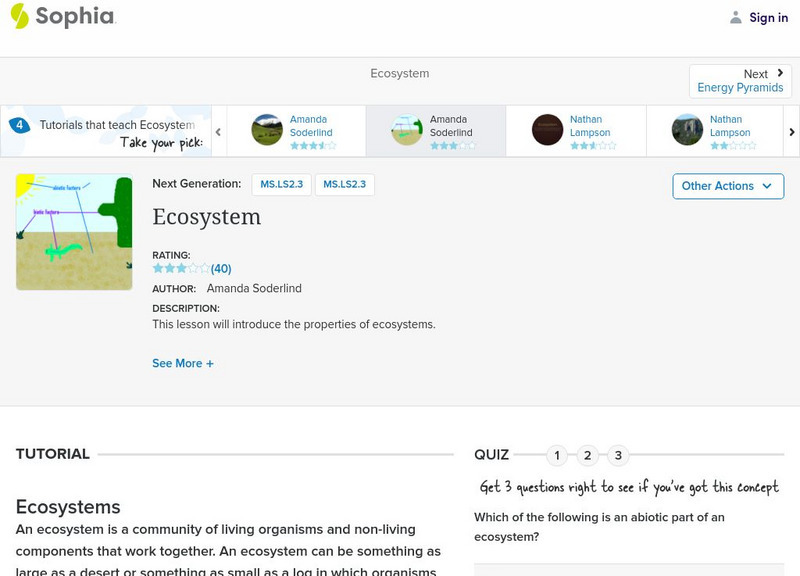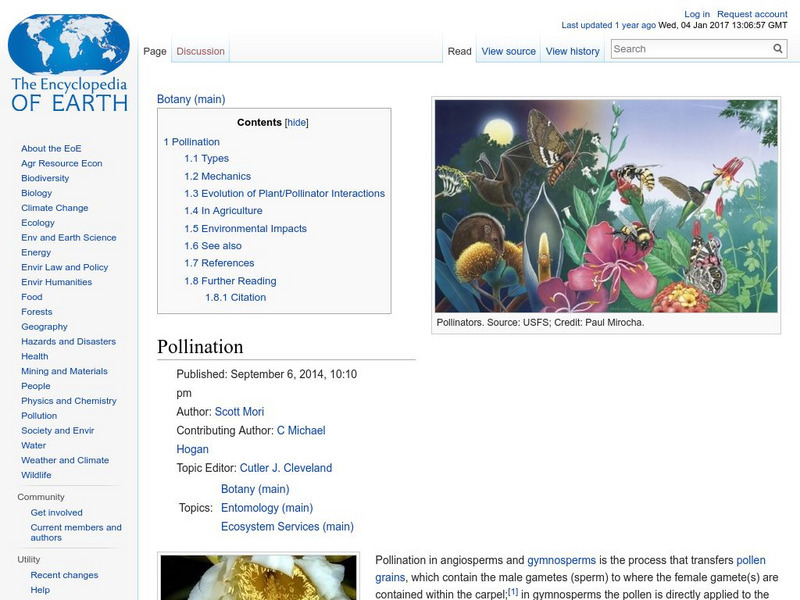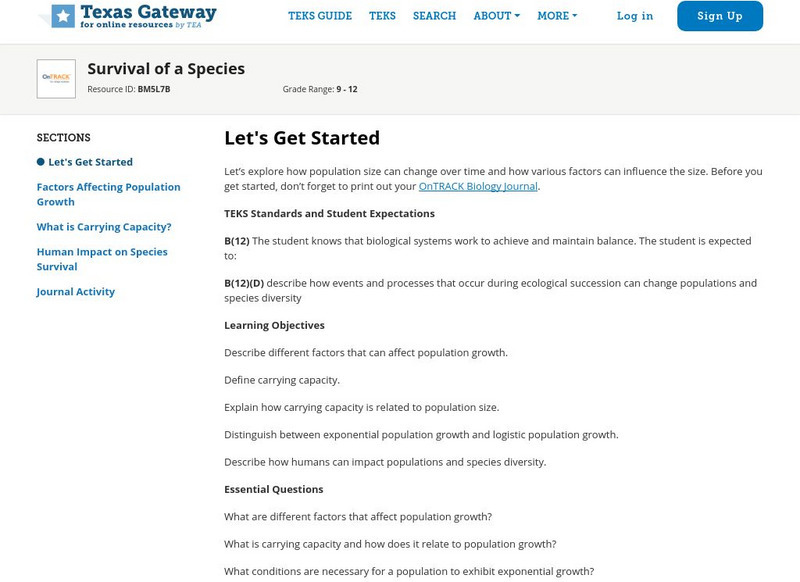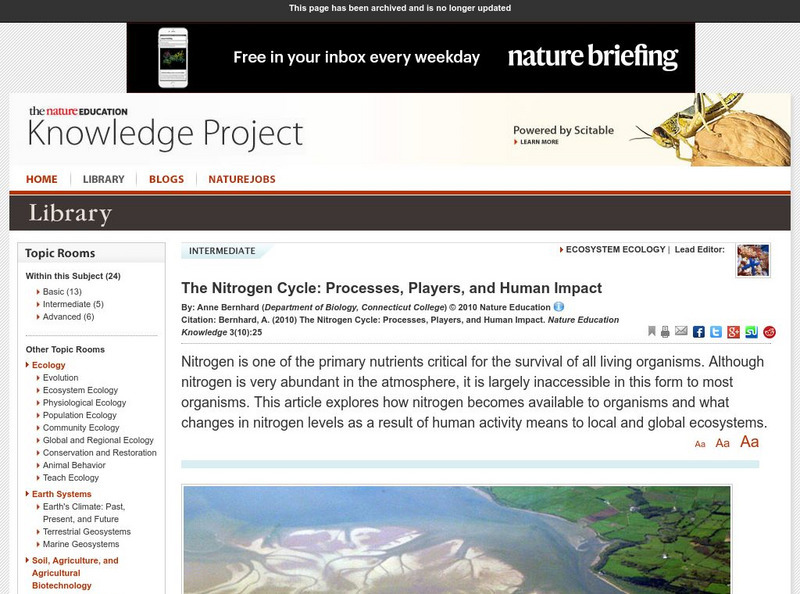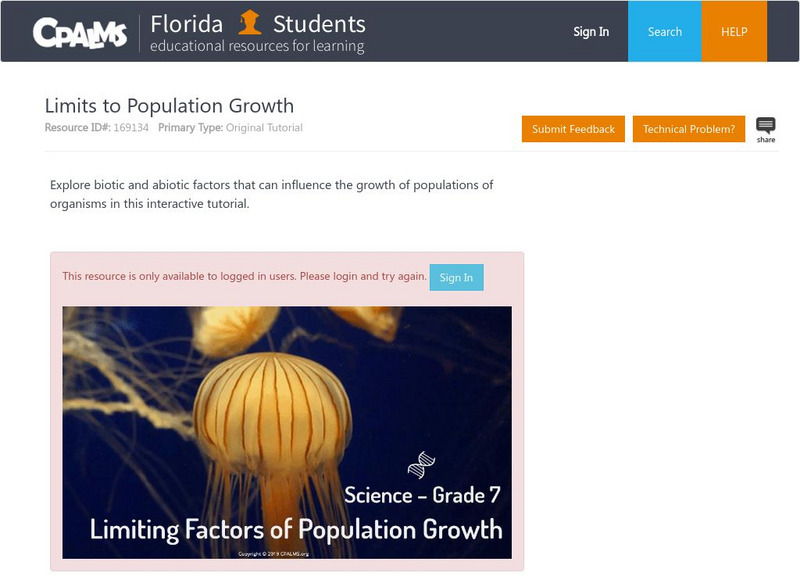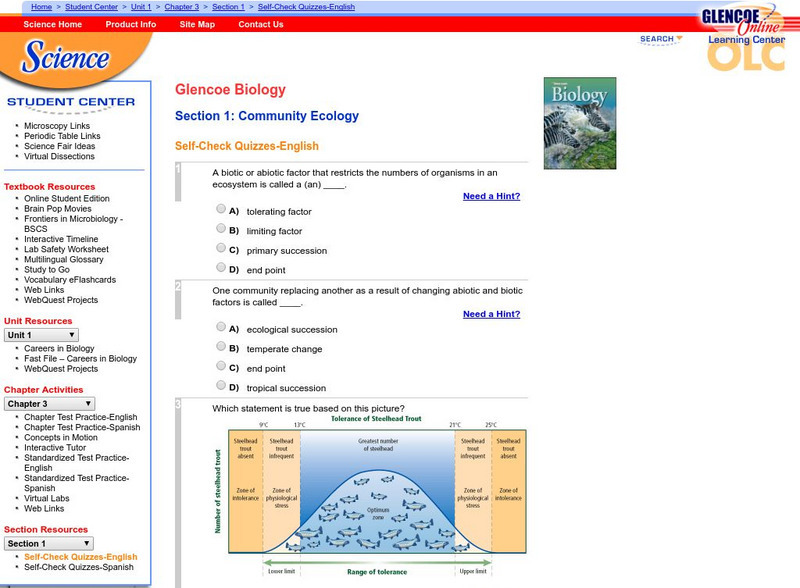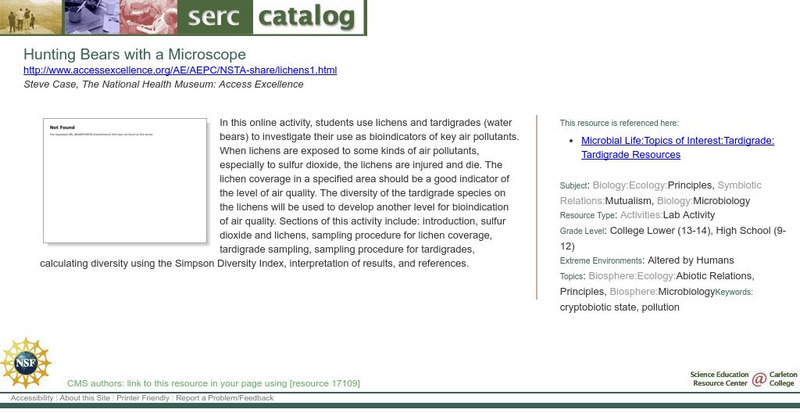Texas Instruments
Texas Instruments: Ecology Vocabulary
This StudyCards stack enables students to review the vocabulary used in studying ecology.
Climate Literacy
Clean: Global Patterns in Green Up and Green Down
Young scholars analyze and explore visualizations and graphs that show the annual cycle of plant growth and decline. They investigate several regions in each hemisphere that have different land cover and will match graphs that show...
PBS
Pbs Learning Media: River Rewilding: Advanced Water Quality
In this unit, students will try to improve stream quality and reduce human impacts by taking action.This Advanced Water Quality unit is packaged into three smaller parts: Part 1: Stream Habitat Assessment; Part 2: Macroinvertebrate...
BiologyWise
Biology Wise: Pollination of Flowers
Discusses what pollination is, the types, what happens during pollination, its importance in agriculture and horticulture, and the biotic and abiotic factors that facilitate pollination. Has some embedded ads.
Sophia Learning
Sophia: Ecosystems
Gives basic information about the community that forms between living and non-living factors that function together in an ecosystem. [47 secs]
Georgia Department of Education
Ga Virtual Learning: Ap Biology: Ecology
Students review the study of living things and make connections back to Earth's systems. This unit focuses on how various species, grouped in populations and communities, work with the nonliving things around them to ensure survival.
PBS
Pbs Learning Media: Living and Nonliving
What is it that distinguishes a living organism from a nonliving object? This collection of images presents examples that aren't as clear-cut as one might think, enticing students to question the meaning of life.
Science Education Resource Center at Carleton College
Serc: Our Big Backyard: How Does Our Local Ecosystem Change During the Year?
Get students observing the environment around their school with this activity. In this lab experiment, students keep a journal containing written observations and digital pictures of how local flora and fauna change during the school year.
Encyclopedia of Earth
Encyclopedia of Earth: Botany: Pollination
Scientific article detailing what pollination is, types of pollination, animals (mainly insects) that facilitate pollination, ways pollination can take place, its evolution, pollination in agriculture, and threats to pollination....
TeachEngineering
Teach Engineering: Environmental Interactions
In this activity, students create a "web" to identify and demonstrate the interactions among the living and non-living parts of an environment. This information allows students to better understand what an environment is and to also...
Texas Education Agency
Texas Gateway: Survival of a Species
Given scenarios, illustrations or descriptions, the student will describe how long-term survival of species is dependent on changing resource bases that are limited.
The Wonder of Science
The Wonder of Science: 3 Ls3 2: Environmental Influence on Traits
Work samples, phenomena, assessment templates, and videos that directly address standard 3-LS3-2: environmental influence on traits.
Science Education Resource Center at Carleton College
Serc: Energy Pyramids in Different Biome Locations
A research activity where young scholars research the various biotic and abiotic factors that combine to make up a biome. The end product will be the creation of a PowerPoint presentation that identifies these factors and the creation of...
Science Education Resource Center at Carleton College
Serc: Plant Succession Field Investigation
This lesson is to be used as an introduction to ecosystems and plant succession. Students will observe both biotic and abiotic features of a selected site on a plot of wild land. They will take notes, make drawings, and collect samples...
Nature Research
Nature: The Nitrogen Cycle: Processes, Players, and Human Impact
Find out how nitrogen is cycled throughout the biosphere as it passes through the nitrogen cycle. Learn about the biotic and abiotic factors involved in the process as well as the implications of human activity on the nitrogen cycle.
Untamed Science
Untamed Science: Biology: World Biomes: Lakes and Ponds Biome
Learn about the biotic and abiotic factors of lakes and ponds as well as learning how lakes form through reading and video clips.
CPALMS
Florida State University Cpalms: Florida Students: Limits to Population Growth
Explore biotic and abiotic factors that can influence the growth of populations of organisms in this interactive tutorial.
SMART Technologies
Smart: Living and Nonliving Things
Students define the characteristics of living and non-living things, identify living and non-living components of an ecosystem, and identify the roles of organisms in living systems.
CK-12 Foundation
Ck 12: Episd: Ecosystems
[Free Registration/Login may be required to access all resource tools.] Explore ecosystems and ecology on an introductory level uncovering fact about types of ecosystems and the competitive exclusion principle.
CK-12 Foundation
Ck 12: Episd: What Are Biomes?
[Free Registration/Login may be required to access all resource tools.] Students will consider the influences that create different biomes. Recognize and classify the types of biomes.
McGraw Hill
Glencoe Biology: Community Ecology: Self Check Quiz
Answer these five multiple-choice questions about community ecology. After answers are submitted, students can review their mistakes.
Science Education Resource Center at Carleton College
Serc: Healthy Waters
By the end of this lesson, young scholars will understand how we can use macroinvertebrates to determine the quality of water in a river or stream.
Texas Instruments
Texas Instruments: Probing an Aquatic Ecosystem
In this activity, students' use a pH sensor and Temperature Sensor to measure and compare the pH and temperature of three aquariums over a period of several weeks. They will compare and understand how plants and animals affect the water...
Science Education Resource Center at Carleton College
Serc: Hunting Bears With a Microscope
In this study, students will use lichens and tardigrades (water bears) to investigate their use as bioindicators of key air pollutants.
Other popular searches
- Biotic Abiotic
- Biotic and Abiotic Factors
- Biotic and Abiotic
- Abiotic Biotic Environment
- Abiotic and Biotic Elements
- Abiotic and Biotic Resources
- Biotic Abiotic Factors
- Abiotic Biotic Lab
- Ecosystems Abiotic Biotic
- Biotic Abiotic Pictures
- Biotic Abiotic Piotures
- Biotic or Abiotic Changes





